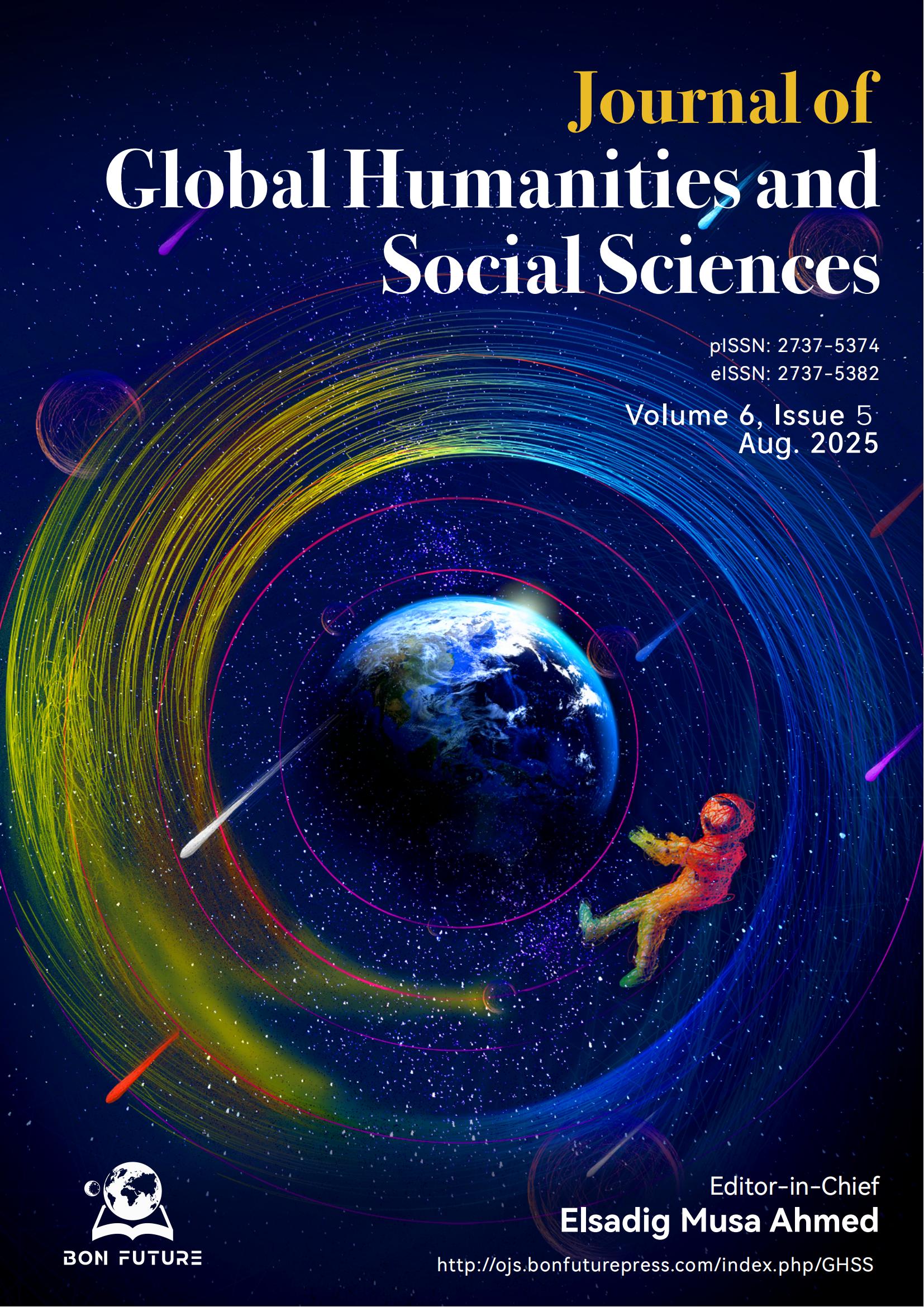Understanding the Impact of E-Government Service Delivery on User Coproduction: The Case of Administrative Service Reform
DOI:
https://doi.org/10.61360/BoniGHSS252018480504Keywords:
E-government services, user coproduction, value creation, information transformationAbstract
This article examines the impact of e-government service delivery on user coproduction through a case study of administrative reform in Nanjing, China. Based on interviews conducted between 2019 and 2021, it analyzes why the government applied e-government tools to deliver public services and its impact on user coproduction in the full life-cycle service delivery. The finding suggests that user coproduction has been primarily shaped by information transformation and value creation. The case further reveals a profound change in e-government service provision in which a needs-based approach merged representing a major theme of the on-going administrative service reform in China. Implications for future service reforms and coproduction of public services are discussed in conclusion.
References
Alford, J. (2002). Why do public-sector clients coproduce? Toward a contingency theory. Administration & Society, 34(1), 32-56. https://doi.org/10.1177/0095399702034001004.
Allen, B., Tamindael, L. E., Bickerton, S. H., & Cho, W. (2020). Does citizen coproduction lead to better urban services in smart cities projects? An empirical study on e-participation in a mobile big data platform. Government Information Quarterly, 37(1), 101412. https://doi.org/10.1016/j.giq.2019.101412.
Bovaird, T., & Loeffler, E. (2012). From engagement to co-production: The contribution of users and communities to outcomes and public value. Voluntas: International Journal of Voluntary and Nonprofit Organizations, 23(4), 1119-1138. https://doi.org/10.1007/s11266-012-9309-6.
Bovaird, T. (2007). Beyond Engagement and Participation: User and Community Coproduction of Public Services. Public Administration Review, 67(5): 846-860.
Boyle, D., Coote, A., Sherwood, C. and Slay, J. (2010). Right Here, Right Now. Retrieved from http://b.3cdn.net/nefoundation/8678a9d67320a294b4_38m6ivak1.pdf.
Balla, S. J. (2017). Is consultation the “new Normal?”: Online policymaking and governance reform in China. Journal of Chinese Political Science, 22(3), 375-392. https://doi.org/10.1007/s11366-017-9484-9.
Chen, Y. C., & Perry, J. (2003). Outsourcing for e-government: Managing for success. Public Performance & Management Review, 26(4), 404-421. http://doi.org/10.1177/1530957603252590.
Chen, A. J., Pan, S. L., Zhang, J., Huang, W. W., & Zhu, S. (2009). Managing e-government implementation in China: A process perspective. Information & Management, 46(4), 203-212. https://doi.org/10.1016/j.im.2009.02.002.
Chatfield, A. T., & Reddick, C. G. (2018). All hands on deck to tweet #sandy: Networked governance of citizen coproduction in turbulent times. Government Information Quarterly, 35(2), 259-272. https://doi.org/10.1016/j.giq.2017.09.004.
De Keyser, A., Verleye, K., Lemon, K. N., Keiningham, T. L., & Klaus, P. (2020). Moving the customer experience field forward: introducing the touchpoints, context, qualities (TCQ) nomenclature. Journal of Service Research, 23(4), 433-455. https://doi.org/10.1177/1094670520928390.
Entwistle, T. and Martin, S. (2005). From competition to collaboration in public service delivery: A new agenda for research. Public Administration, 83(1): 233-242. https://doi.org/10.1111/j.0033-3298.2005.00446.x.
Eggers, W. D. (2007). Government 2.0: Using technology to improve education, cut red tape, reduce gridlock, and enhance democracy. Rowman & Littlefield.
Ferris, J. M. (1984). Coprovision: Citizen time and money donations in public service provision. Public Administration Review, 324-333. https://doi.org/10.2307/976078.
Fledderus, J., Brandsen, T., & Honingh, M. (2014). Restoring trust through the co-production of public services: A theoretical elaboration. Public Management Review, 16(3), 424-443. https://doi.org/10.1080/14719037.2013.848920.
Frieling, M. A., Lindenberg, S. M. and Stokman, F. N. (2014). Collaborative communities through coproduction two case studies. The American Review of Public Administration, 44(1): 35-58. https://doi.org/10.1177/0275074012456897.
Gauld R, Goldfinch S and Horsburgh S (2010) Do they want it? Do they use it? The
‘‘demand-side’’ of e-government in Australia and New Zealand. Government
Information Quarterly, 27(2): 177–186. https://doi.org/10.1016/j.giq.2009.12.002.
Huang, B., & Yu, J. (2019). Leading digital technologies for coproduction: the case of “Visit Once” administrative service reform in Zhejiang Province, China. Journal of Chinese Political Science, 24(3), 513-532. https://doi.org/10.1007/s11366-019-09627-w.
Harrison, S., & Johnson, P. (2019). Challenges in the adoption of crisis crowdsourcing and social media in Canadian emergency management. Government Information Quarterly, 36(3), 501-509.
Jakobsen, M. (2012). Can Government Initiatives Increase Citizen Coproduction? Results of A Randomized Field Experiment. Journal of Public Administration Research and Theory, doi:10.1093/jopart/mus036
Jakobsen, M., & Andersen, S. C. (2013). Coproduction and equity in public service delivery. Public Administration Review, 73(5), 704-713. https://doi.org/10.1111/puar.12094.
Jo, S., & T. Nabatchi. (2019). Coproducing healthcare: Individual-level impacts of engaging citizens to develop recommendations for reducing diagnostic error. Public Management Review, 21(3): 354–375. https://doi.org/10.1080/14719037.2018.1487577.
Kirkpatrick, I., Ackroyd, S., & Walker, R. M. (2005). The New Managerialism and Public Service Professions. London, Palgrave Macmillan.
Liu, H. K. (2017). Crowdsourcing government: Lessons from multiple disciplines. Public Administration Review, 77(5), 656-667. https://doi.org/10.1111/puar.12808.
Ma, L., Chung, J., & Thorson, S. (2005). E-government in China: Bringing economic development through administrative reform. Government Information Quarterly, 22(1), 20-37. https://doi.org/10.1016/j.giq.2004.10.001.
Ma, L., & Wu, X. (2020). Citizen engagement and co-production of e-government services in China. Journal of Chinese Governance, 5(1), 68-89. https://doi.org/10.1080/23812346.2019.1705052.
Mei, C., & Wang, X. (2017). Political incentives and local policy innovations in China. Journal of Chinese Political Science, 22(4), 519-547. https://doi.org/10.1007/s11366-017-9513-8.
Mergel, I., & Bretschneider, S. I. (2013). A three-stage adoption process for social media use in government. Public Administration Review, 73(3), 390-400. https://doi.org/10.1111/puar.12021.
Meijer , Albert J. , Curtin, D., & Hillebrandt, M. (2012). Open government: Connecting discourses on transparency and participation . International Review of Administrative Sciences 78 (1): 10-29 .
Micheli, P., S. J. S. Wilner, S. Bhatti, M. Mura, & M. B. Beverland. (2019). Doing design thinking: Conceptual review, synthesis and research agenda. Journal of Product Innovation Management, 36: 124–148. https://doi.org/10.1111/jpim.12466.
Nabatchi T., Sancino A., & Sicilia M. (2017). Varieties of participation in public services: The who, when and what of coproduction. Public Administration Review, 77(5), 766-776. https://doi.org/10.1111/puar.12765.
Noy, C. (2008). Sampling knowledge: The hermeneutics of snowball sampling in qualitative research. International Journal of Social Research Methodology, 11(4), 327-344. https://doi.org/10.1080/13645570701401305.
Ostrom, E. (1996). Crossing the great divide: Coproduction, synergy, and development. World Development, 24(6), 1073-1087. https://doi.org/10.1016/0305-750X(96)00023-X.
Osborne, S. P., & Strokosch, K. (2013). It takes two to tango? Understanding the c o‐production of public services by integrating the services management and public administration perspectives. British Journal of Management, 24, S31-S47. https://doi.org/10.1111/1467-8551.12010.
Osborne, S. P. (2018). From public service-dominant logic to public service logic: are public service organizations capable of co-production and value co-creation? Public Management Review, 20(2), 225-231. https://doi.org/10.1080/14719037.2017.1350461.
Parks, R. B., Baker, P. C., Kiser, L., Oakerson, R., Ostrom, E., Ostrom, V., Whitaker, G. P. and Wilson, R. K.(1981). Consumers as coproducers of public services: Some economic and institutional considerations. Policy Studies Journal, 9(7): 1001-1011. https://doi.org/10.1111/j.1541-0072.1981.tb01208.x.
Pestoff, V. (2006). Citizens and coproduction of welfare services: Childcare in eight European countries. Public Management Review, 8(4): 503-519. https://doi.org/10.1080/14719030601022882.
Parrado, S., Van Ryzin, G. G., Bovaird, T., & Löffler, E. (2013). Correlates of co-production: Evidence from a five-nation survey of citizens. International Public Management Journal, 16(1), 85-112. https://doi.org/10.1080/10967494.2013.796260.
People’s Daily Online. (2021). Government services “Ning satisfied,” nation praises “high capability”. http://js.people.com.cn/n2/2021/0609/c360302-34768985.html
Reddick CG and Turner M. (2012). Channel choice and public service delivery in Canada: Comparing e-government to traditional service delivery. Government Information Quarterly, 29(1): 1–11. https://doi.org/10.1016/j.giq.2011.03.005.
Radnor, Z., Osborne, S. P., Kinder, T., & Mutton, J. (2014). Operationalizing co-production in public services delivery: The contribution of service blueprinting. Public Management Review, 16(3), 402-423. https://doi.org/10.1080/14719037.2013.848923.
Sanders, E. B., & P. J. Stappers. (2008). Co-Creation and the new landscapes of design. CoDesign, 4 (1): 5–18. https://doi.org/10.1080/15710880701875068.
Scholta, H., Mertens, W., Kowalkiewicz, M., & Becker, J. (2019). From one-stop shop to no-stop shop: An e-government stage model. Government Information Quarterly, 36(1), 11-26. https://doi.org/10.1016/j.giq.2018.11.010.
Schlæger, J., & Stepan, M. (2017). Exploring the sustainability of e-government innovation in China: A comparative case study on 22 prefectural-level cities’ websites. Journal of Chinese Political Science, 22(4), 625-649. https://doi.org/10.1007/s11366-017-9501-z.
Sharp, E. B. (1980). Toward a new understanding of urban services and citizen participation: the coproduction concept. The American Review of Public Administration, 14(2), 105-118. https://doi.org/10.1177/027507408001400203.
Steen, M. (2013). Co-design as a process of joint inquiry and imagination. Design Issues, 29 (2): 16–28. https://doi.org/10.1162/DESI_a_00207.
Shen, Y., Cheng, Y., & Yu, J. (2022). From recovery resilience to transformative resilience: How digital platforms reshape public service provision during and post COVID-19. Public Management Review, 1-23. https://doi.org/10.1080/14719037.2022.2033052.
Trischler, J., Dietrich, T., & Rundle-Thiele, S. (2019). Co-design: from expert-to user-driven ideas in public service design. Public Management Review, 21(11), 1595-1619. https://doi.org/10.1080/14719037.2019.1619810.
Teixeira, J., L. Patrício, N. J. Nunes, L. Nobrega, R. P. Fisk, & L. Constantine. Customer experience modeling: From customer experience to service design. Journal of Service Management, 2012, 23 (3): 362–376. https://doi.org/10.1108/09564231211248453.
Trischler, J., & Westman Trischler, J. (2021). Design for experience–a public service design approach in the age of digitalization. Public Management Review, 1-20. https://doi.org/10.1080/14719037.2021.1899272.
Van Eijk, C., & Steen, T. (2016). Why engage in co-production of public services? Mixing theory and empirical evidence. International Review of Administrative Sciences, 82(1), 28-46. http://doi.org/10.1177/0020852314566007.
Vargo, S. L., Wieland, H., & Akaka, M. A. (2015). Innovation through institutionalization: A service ecosystems perspective. Industrial Marketing Management, 44, 63-72. https://doi.org/10.1016/j.indmarman.2014.10.008.
Vargo, S. L., & R. F. Lusch. (2017). Service-dominant Logic 2025. International Journal of Research in Marketing, 34 (1): 46–67. https://doi.org/10.1016/j.ijresmar.2016.11.001.
West, D.M. (2005) Digital Government: Technology and Public Sector Performance. Princeton,NJ: Princeton University Press.
Weerakkody, V., El-Haddadeh, R., Sivarajah, U., Omar, A., & Molnar, A. (2019). A case analysis of E-government service delivery through a service chain dimension. International Journal of Information Management, 47, 233-238. https://doi.org/10.1016/j.ijinfomgt.2018.11.001.
Yin, R. K. (2015). Case study research: Design and methods. London: SAGE Publications Ltd.
Published
Issue
Section
License
Copyright (c) 2025 Xuan Tu

This work is licensed under a Creative Commons Attribution 4.0 International License.




